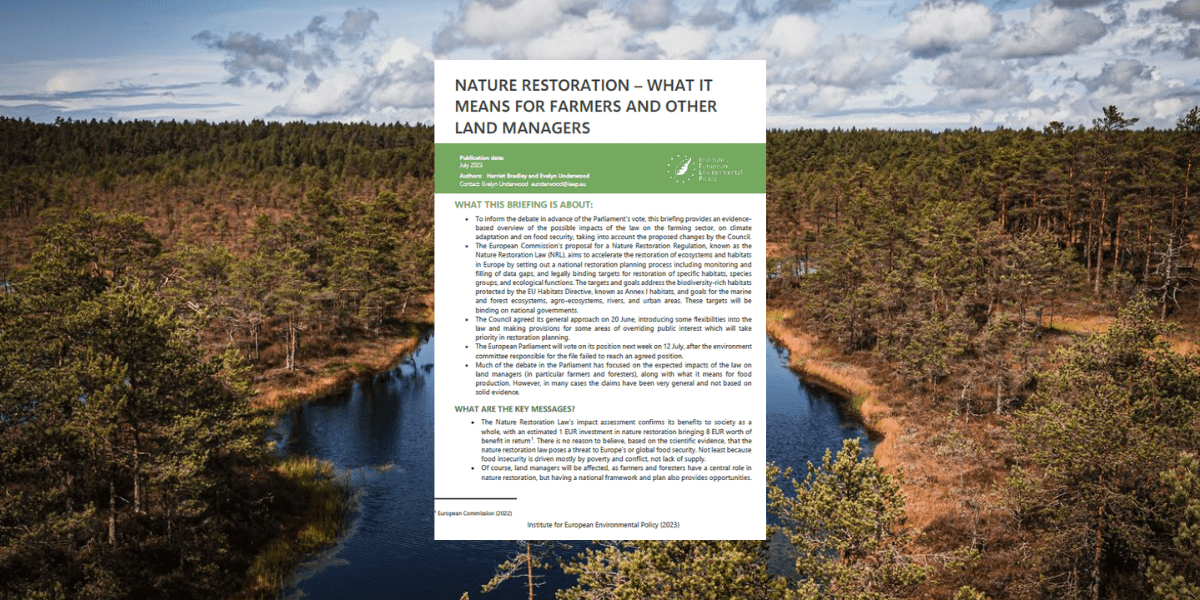AUTHOR: Evelyn Underwood, Harriet Bradley
The European Commission’s proposal for a Nature Restoration Regulation, known as the Nature Restoration Law (NRL), aims to accelerate the restoration of ecosystems and habitats in Europe.
The European Council agreed its general approach on 20 June, introducing some flexibilities into the law. The European Parliament will vote on its position next week on 12 July, after the environment committee responsible for the file failed to reach an agreed position.
Much of the debate in the Parliament has focused on the expected impacts of the law on land managers (foresters and in particular farmers), along with what it means for food production. However, in many cases the claims have been very general and not based on solid evidence. To inform the debate in advance of the Parliament’s vote, this briefing provides an evidence-based overview of the possible impacts of the law on the farming sector, on climate adaptation and on food security, taking into account the proposed changes by the Council.
The key messages (elaborated in the briefing) are:
- The Nature Restoration Law will provide significant benefits to society with an estimated 1 EUR investment in nature restoration bringing 8 EUR worth of benefit in return. There is no reason to believe, based on the scientific evidence, that the nature restoration law poses a threat to Europe’s or global food security.
- To change the declining trends in biodiversity across Europe, and at the same time make our forests and farmland climate resilient, some land managers will have to change their practices and some areas will need land use changes such as arable to grassland or wetland or rewilding. But having a national framework and plan also provides opportunities.
- The impacts are highly differentiated: there are broad provisions for farms to improve soils and increase landscape diversity, whose effects can be positive for productivity and climate adaptation, especially long-term. Provisions requiring more significant land use changes will affect a much smaller subset (e.g. a portion of the farmland on floodplains or peatlands).
- Given the short term costs of changing practices and the opportunity costs for some land managers caused by ceasing or scaling back production, there is a clear case for supporting such changes to ongoing management with public funding, such as that available in the CAP and other EU funds, and for providing farmers and foresters with better advice, tools, research, and long-term perspectives. Today’s inaction would only lead to higher expected costs in the future.
- The Council’s amendments to the Commission proposal introduce a number of flexibilities that allow Member States to focus nature restoration efforts on non-farmed areas, e.g. reducing the need to rewet peatlands and restore protected habitats that are in agricultural use.

